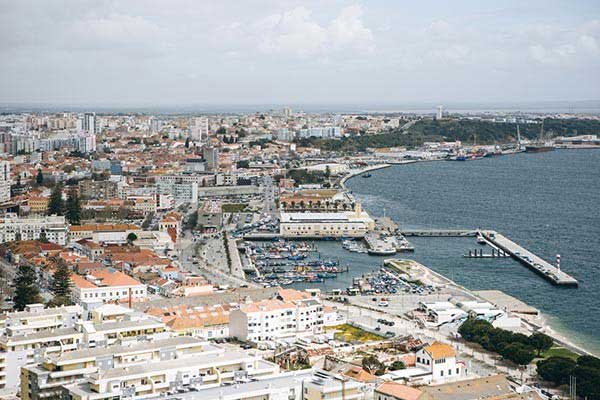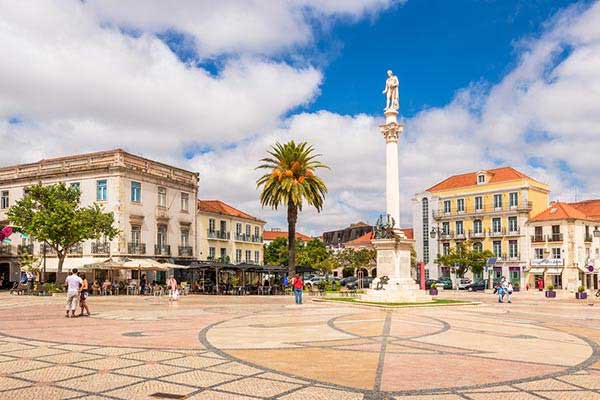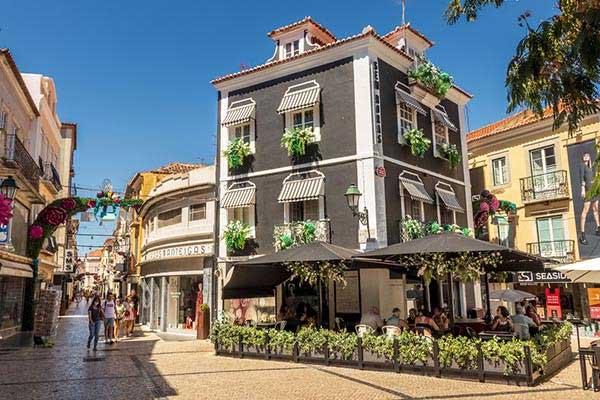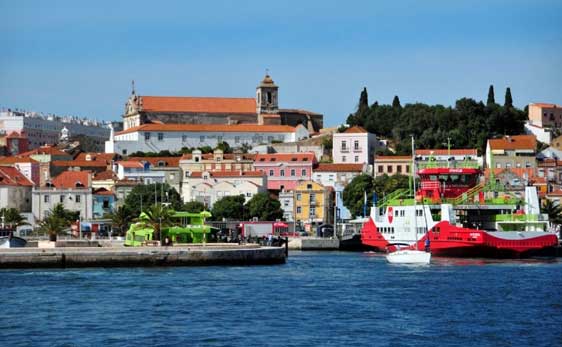By Terry Coles
The traditional Portuguese city of Setúbal, famous for sardines and its sweet muscatel wine is just a thirty-minute commute from Lisbon, the countries dazzling capital. Situated on the northern banks of the Sado Estuary, Setúbal is a working-class city with more of an industrial feel. Far more affordable and less of a tourist hub than its affluent neighbors’ Cascais and Estoril the city has much to offer.
Retire in Setúbal

With a population of 122,000, Setúbal has both public and private hospitals along with clinics. A large shopping mall boasts over 100 stores, has a large food court, gym, cinema with movies in English along with a hyper-mart (grocery-department store). Nearby is a brand name, designer outlet-mall featuring names like: Adidas, Calvin Klein, Guess, Lacoste, Levi’s, New Balance, Nike, Ralph Loren, Rockport, Samsonite, and more. Mingle with the locals at Mercado do Livramento, an extensive, indoor market offering fruits, vegetables, fish, baked goods, and handicrafts.
For those moving here with children, options for education include public and private schools, international schools, higher education, and a polytechnic institute. The area has a sizeable expat population that holds regular meetups and can be found on social media platforms like Facebook. Groups organize outings, dances, dinners, group exercise classes, and more to keep you and your family as busy as you’d like.
Lifestyle in Setúbal

Setúbal is situated in an area surrounded by natural beauty comprised of mountains, beaches, and old-world charm. Stroll along the cobbled-streets near Praça de Bocage, the town’s main plaza in the heart of the old town to soak in the local vibe. Enjoy a plate of Choco Frito better known as fried cuttlefish, or grilled sardines, both easily found in local eateries. Just like the rest of Portugal, a variety of food can be found from traditional Portuguese fare, Indian, Chinese, Italian, and vegetarian options.
Shop like the Portuguese at Mercado do Livramento, the traditional market offering seafood, fruits and vegetables, baked goods, handicrafts, and more. This huge indoor market claims to be the largest in the country along with having the best seafood in the world, according to the signs proudly displayed on its walls. Dating back to 1876 when the first market building was erected, it was re-built in 1930 and has been providing the freshest products ever since. Inside the walls of the mercado are lined with traditional blue and white tiles from the 30s and 40s and the outside features an Art Deco design.
Located on the main plaza of the town is the 18th-century church, Igreja de São Julião turned national monument in 1910. Most of the church was destroyed in the great earthquake of 1755 and rebuilt in the Baroque style, while the main portal retains its Manueline style. Have a peek inside to see the tiled walls, gilded columns, and beautiful altarpiece.
Fifteen minutes north of Setúbal is the majestic Castle of Palmela, perched high in the Arrabida mountains. Like all castles, there is a steep road up to it so if you don’t have a car there is always the option to hail a taxi if trekking uphill is not to your liking. Inside the complex are the Church of Santiago, a museum and fort, a luxury hotel, and panoramic views overlooking the Sado and Tagus estuaries.
Outdoor enthusiasts will take pleasure in the forested hills here that offer hiking trails leading to breathtaking vistas. Towering cliffs offer views of the coastal peninsula, or those who dare might enjoy an adrenaline-filled ocean kayaking trek. Roadsters will enjoy driving along the Estrada de Escarpa (N379), a mountain road that covers some of the most spectacular scenery in the region.
Not to be missed is the Troia Peninsula with some of the most exclusive, alluring beaches in the country. Hop aboard a ferry for a short commute and hopefully spot dolphins frolicking in the water along the way. This eight-mile stretch of golden sand, crystal clear waters and pine-forested sand dunes seems secluded from the rest of the world yet offers the perfect day-trip from
Setúbal. Hidden in the pine forests are pricey resorts for those that command super luxury. Fine dining restaurants, upscale bars, and a large casino complex dominate this area frequented by the well-to-do. Since history is never far away head to the eastern side of the peninsula to visit the ruins of Cetobriga, which once served as a major Roman fish-salting area. The peninsula can even be accessed by car, about a 90-minute drive from Setúbal.
Sun seekers will be delighted at the Costa da Caparica, a sixteen-mile stretch of supple sand, powerful Atlantic coast, and stunning natural beauty. Just a thirty-minute drive from the city this coastal area runs along the western side of the Setúbal peninsula.
Cost of Living in Setúbal

A couple can live nicely on around $2,500 a month in Setúbal, depending on lifestyle, far less than pricier hubs like Lisbon, Cascais, or Estoril. A furnished, two-bedroom apartment in the city center can be found for around $700 and up. Add another $135 for utilities; electricity, water; internet, and cell phone packages can be found for $65. Transportation costs could run around $200 with a car or a monthly pass for public transportation can be bought for $45. Dining out varies greatly by frequency and type of restaurant so plan on around $200 a month, or for those that prefer to cook plan on spending around $400 a month. Private health insurance in Portugal is affordable with plans starting around $100 per couple but do increase with age, pre-existing conditions, and how comprehensive of a policy is needed. Residents can also take advantage of the public healthcare system at little to no cost to them. The public system covers from birth till death and does not exclude pre-existing conditions, but routine dental and eye care are not covered.
Featured Image Copyright: ©iStock.com/mtcurado

